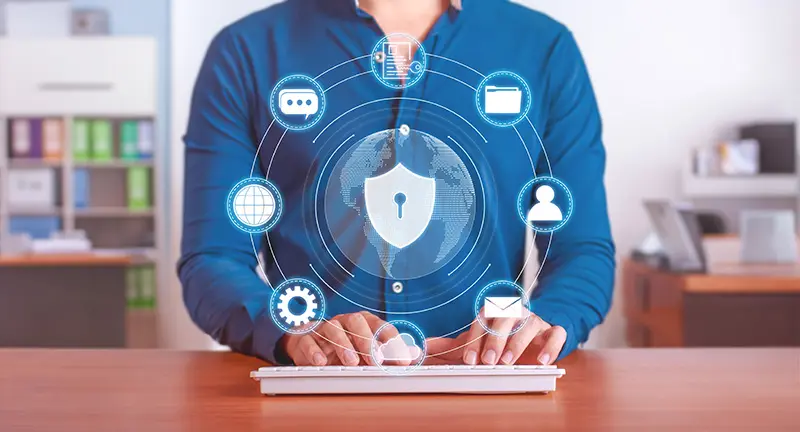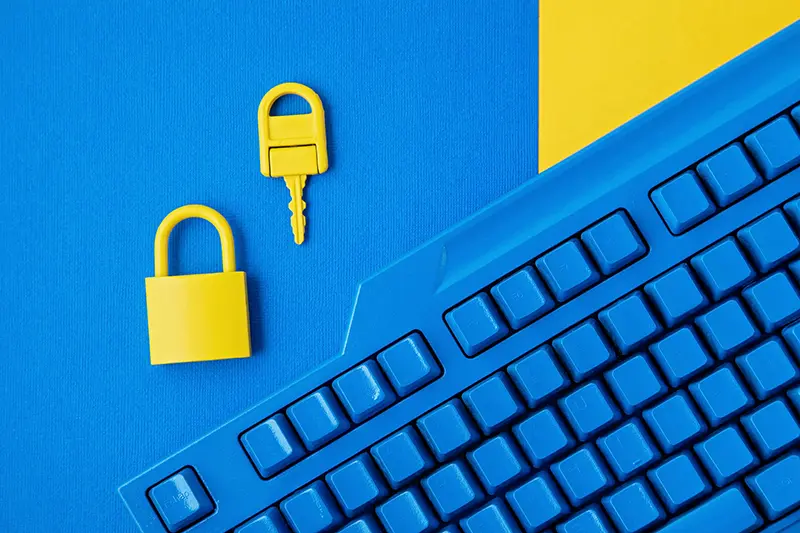For many small business owners, cybersecurity feels like something only large corporations need to worry about. After all, hackers would rather target a bank or Fortune 500 company than a local store, right? Unfortunately, the opposite is often true. Small businesses are prime targets because cybercriminals know these organizations usually lack dedicated IT teams and advanced protections.
Your website, email accounts, and customer data are valuable assets. If they’re compromised, the impact can be devastating – financial losses, reputational damage, even legal consequences. Cybersecurity isn’t a luxury for small businesses. It’s a fundamental part of running a modern company, no different from locking the doors at the end of the day.
At Koi, we believe every small business deserves a website and digital presence that’s both effective and secure. That’s why we build cybersecurity best practices into our strategies, helping owners protect what they’ve worked so hard to create.
The Real Risks Facing Small Businesses Online
Cyberattacks don’t always look like dramatic movie-style hacks. Often, they’re subtle, sneaky, and highly preventable if you understand the risks. Some of the most common threats small businesses face include phishing emails designed to trick employees into giving away passwords, malware that can infect your site through outdated software or unsecured plugins, and ransomware attacks that lock your files until a payment is made.
Even something as simple as weak passwords or unsecured Wi-Fi can open the door for intruders. What makes these attacks especially damaging is that small businesses often don’t have a recovery plan. The cost of downtime, lost revenue, and eroded trust can be far greater than the cost of prevention.
Understanding the risks is the first step in building a defense that works for your business.
Step 1: Secure Your Website
Your website is the digital storefront for your business, and just like a physical store, it needs protection. One of the simplest and most important steps is installing an SSL certificate. This encrypts the connection between your site and its visitors, protecting data like contact forms, login credentials, and payment information. You’ll know your SSL is active when your site uses “https://” and displays a padlock icon in the browser.
Beyond SSL, keeping your website platform, themes, and plugins updated is essential. Outdated software is one of the most common ways hackers gain access. Regular updates patch vulnerabilities before they can be exploited.
At Koi, we provide ongoing website care plans that include updates, backups, and monitoring, so you never have to wonder if your site is protected.
Step 2: Protect Your Passwords and Accounts
Weak or reused passwords are one of the easiest ways for attackers to break into business accounts. Each login – whether for email, your website dashboard, or cloud tools – should have a strong, unique password. Password managers can make this easier by securely storing and generating complex credentials.
Enabling two-factor authentication (2FA) wherever possible adds an extra layer of security. Even if someone steals a password, they’d still need access to a secondary code, often sent via text or generated in an authentication app.
By making these small adjustments, you dramatically reduce the likelihood of unauthorized access.
Step 3: Educate Your Team
Cybersecurity is only as strong as the people who use your systems every day. One careless click on a phishing email can undo even the best protections. That’s why educating employees is crucial, even if your “team” is only a handful of people.
Teach staff how to spot suspicious emails, avoid downloading unverified attachments, and verify links before clicking. Make it clear that it’s always better to double-check than to take a risk.
Creating a culture of awareness is one of the most cost-effective security measures a small business can implement.
Step 4: Back Up Your Data
Imagine losing your customer database, financial records, or website content overnight. For many small businesses, that scenario would be catastrophic. Regular backups ensure that even if you are hit with ransomware, hardware failure, or accidental deletion, you can recover quickly without losing everything.
Backups should be automated, frequent, and stored in multiple places – such as both a secure cloud service and an offline external drive. The goal is to ensure that no matter what happens, your data remains safe and accessible.
At Koi, our website care plans include automatic backups and easy restoration options so your online presence can bounce back in case of an emergency.
Step 5: Monitor and Respond
Cybersecurity isn’t a one-time project – it’s an ongoing process. Threats evolve constantly, which means your defenses need to evolve as well. Website monitoring tools can detect suspicious activity early, such as multiple failed login attempts or changes to critical files. Antivirus and anti-malware software should be kept current to protect devices your business relies on.
Just as important as monitoring is having a response plan. If you suspect an attack, know who to contact, what steps to take, and how to notify clients if their data might be affected. A clear plan reduces panic and shortens recovery time.
Koi helps small businesses establish proactive monitoring and support, so you don’t have to scramble in the event of a security incident.
The Role of Design in Security
Many small business owners don’t connect website design with cybersecurity, but the two are linked. A poorly coded site, overloaded with unnecessary plugins, or built on a free template can create vulnerabilities. By contrast, a custom website built with security in mind minimizes risks from the start.
At Koi, we don’t just design websites to look great – we design them to be secure, scalable, and resilient. Security isn’t an afterthought. It’s part of the foundation.
Why Small Businesses Partner with Koi
You shouldn’t have to become a cybersecurity expert to run your business effectively. As a small business owner, your focus should be on serving customers and growing your company, not worrying about hackers or data breaches.
That’s why small businesses partner with Koi. We provide custom websites, hosting, and care plans designed to keep your online assets secure. From SSL installation to regular updates, from backups to monitoring, we take the guesswork out of cybersecurity so you can focus on what matters most.
Secure Your Business, Secure Your Future
Cybersecurity may seem intimidating, but protecting your small business doesn’t have to be complicated. By securing your website, using strong passwords, educating your team, backing up your data, and monitoring your systems, you’re already ahead of many potential threats.
When you combine these basics with a custom website strategy, you create a digital presence that is not only effective but safe.
Are you ready to protect your online assets and strengthen your business foundation? Contact Koi today to learn how we can help you secure your website and give you peace of mind.



